The Great Wall is a representative symbol of the Chinese nation and Chinese civilization, the largest and most widely distributed world cultural heritage in China, and a great architectural miracle in human history. This route takes the Ming Great Wall as the main scenery, connects the tourist attractions with the essence of the Ming Great Wall as the core and displays China's ancient construction technology and military defense ideas. It also allows people to appreciate the magnificent appearance of the Great Wall while understanding the wonderful history and colourful culture of the areas along the Great Wall, and enhances the cultural confidence and national pride of the Chinese people.
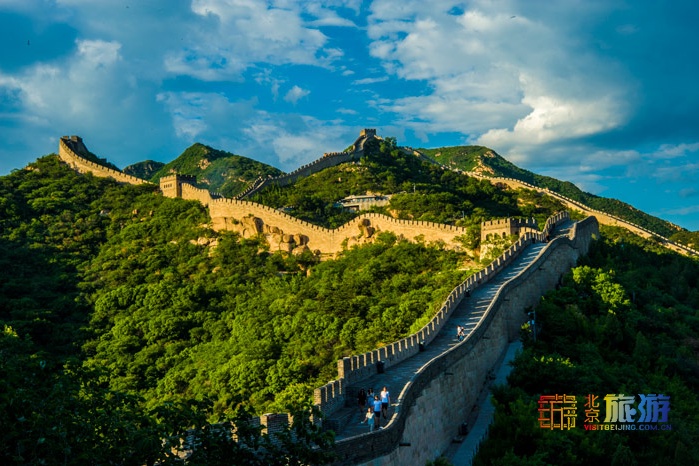
Badaling Great Wall
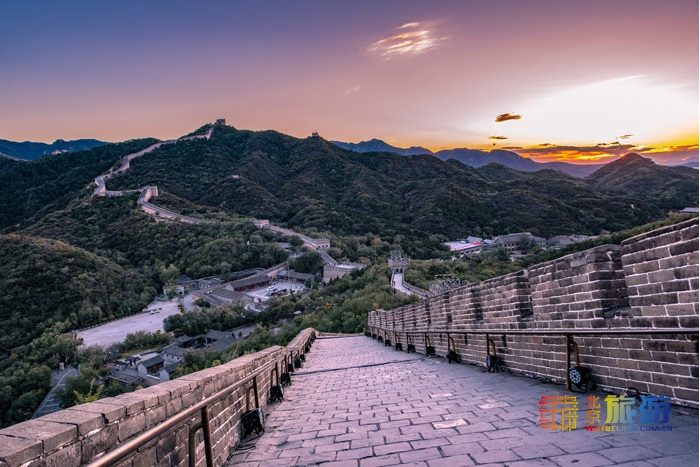
Badaling Great Wall is located in Yanqing District, Beijing, winding over the lofty mountains of the Yanshan Mountain Range. Among thousands of passes on the Great Wall, it is the most well-preserved section, with the longest history, the richest culture, the most magnificent architecture, the most spectacular scenery, and the most famous reputation. It is an outstanding representative of the Great Wall and the most essential part of the Ming Great Wall.
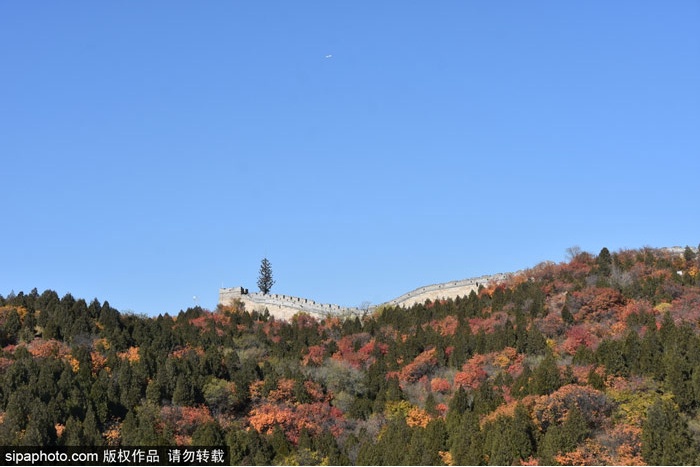
Badaling Great Wall is called one of the nine fortresses in the world, which is an important part of the Great Wall defense project of ancient China, a defile of the Ming Great Wall, and an outpost of Juyongguan, an important pass of the Great Wall. The Badaling Great Wall is the best preserved and most representative section of the Ming Great Wall, so it is the earliest part of the Great Wall to be opened to tourists. Badaling Great Wall is majestic and precipitous, beautiful and green. "Yuguan Tianqian" is one of the eight scenic spots of Juyongguan in the Ming Dynasty, which is famous for its vast scenery and the slogan that “one who fails to reach the Great Wall is not a hero”.
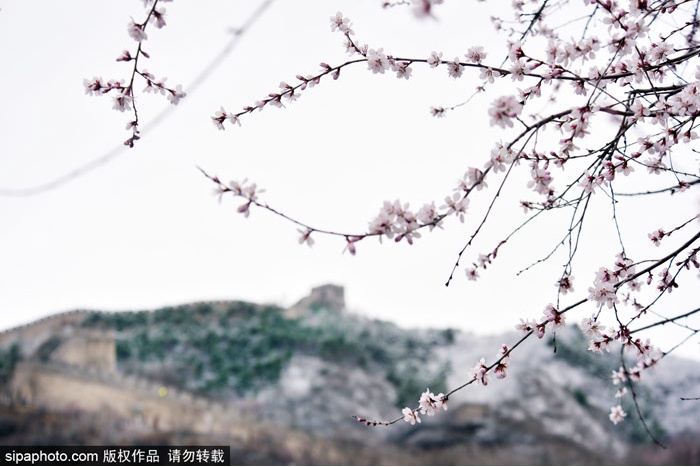
Every April, the Badaling Great Wall gradually enters the season of hiking and flower appreciation, with clusters of apricot blossoms and mountain peach blossoms surrounding the inside and outside of the Great Wall. The fusion of rigid and soft beauty forms an unparalleled charm, adding enough excitement to the Great Wall journey. When the spring breeze blows, the branches full of apricot blossoms sway and dance with the wind. Apricot blossoms are far less fragrant than roses, and the apricot blossoms full of trees only have a faint fragrance, but it is enough to make people feel the pure and elegant quality of apricot blossoms. Stand on the majestic Great Wall, look up at its heroic posture, listen to its breath, feel its grandeur and vicissitudes, enjoy the visual feast of apricot blossoms, with the beautiful scenery of the outside world at your fingertips.

In addition, in order to offer tourists diverse tour options and in-depth experience, Badaling Great Wall also launches night tours from time to time. Under the illumination, the distant mountains are green, the trees nearby are rustling in the wind, the “jade dragon” flies among the lofty mountains, and the "Yuguan Tianqian" looks magnificent. Visitors can feel the unique charm of the Great Wall at its foot.
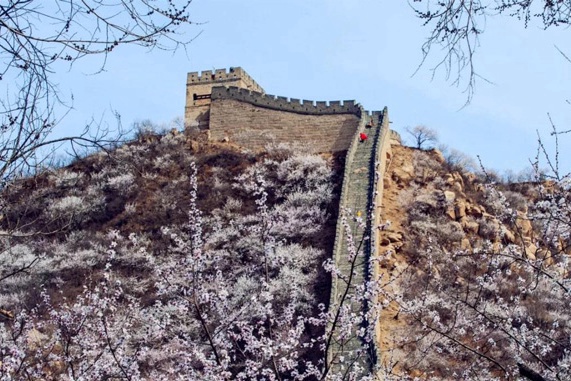
Address: Badaling Town, Yanqing District, Beijing
Mutianyu Great Wall
The ancient history and peculiar landscapes make the Mutianyu Great Wall become the essence of the Great Wall of China. It enjoys the reputation of “Mutianyu is a unique scenery of the Great Wall”. With a total length of 5,400 meters, Mutianyu Great Wall is the longest section of the Great Wall in China. It is also one of the most famous sixteen scenic spots in Beijing and a national 5A-level tourist attraction.

The construction of the Mutianyu Great Wall has its unique style, and the three watchtowers stand side by side on the Zhengguan Terrace, which is rare in the Great Wall. In the northwest, there are Great Wall landscapes commonly known as “Bull's Horn”, “Arrow Buckle” and “Eagle Flying Belly Up”, which are steep and undulating, like a flying dragon.

Zhengguan Terrace: Zhengguan Terrace, also known as Mutianyu Pass and “San Zuo Lou” (three buildings), built in the second year of the Yongle period of the Ming dynasty (1404 AD), has three watchtowers standing side by side. They are divided into upper and lower floors, the middle part is larger, and the two sides are smaller. And the three watchtowers are connected on each floor, forming the pattern of the main hall with side rooms, which is very rare in the entire Great Wall architecture.
Enemy Watchtower: The watchtowers of Mutianyu Great Wall are dense. From Muzi Yitai (Dajiaolou) to Muzi Sitai (Zhengguan Terrace), less than 500 meters, there are 4 watchtowers; From Muzi Yitai to Muzi Er’shitai, the length is only 3,000 meters, and there are 25 watchtowers, watch platforms, wall platforms, and houses. This section of the Great Wall with a watchtower of about 100 meters is also rare.
Double-sided battlements: Mutianyu Great Wall has double-sided battlements. Battlement walls are mainly built outside the Great Wall on most of the other sections, but the Mutianyu section has battlements on both sides, and the battlement wall is the bunker for the defenders to fight against the enemy. The two battlement walls mean that the two sides can be used to fight the enemy at the same time, which shows the important strategic position of the Mutianyu Great Wall in history.
Branch cities: The inner and outer branch cities coexist in the Mutianyu Great Wall. Branch City, that is, the wall built outside the main Great Wall according to the terrain and the needs of the war. The outer branch of Mutianyu is outside of the main city wall, connecting the wall of Muzi Shiyitai; The inner branch city is the walls of the large corner tower which extend to the south, called "Tu Wei Ba Bian" (bald tail).

“Bull’s Horn”: The Mutianyu Great Wall is running northwest, passing the No. 20 watchtower, from the gentle southern slope to the top of the thousand-meter-high northern cliff, and climbing to the top of the 1039-meter-high mountain. Built a watchtower at the top of the mountain, it turns over and goes straight down the edge of the cliff, bypasses the valley, folds down the opposite mountain beam, and meanders to the west. The Great Wall flies up and down and its shape resembles a bull's horn, strong and majestic, so people call it “Bull’s Horn”.
“Eagle Flying Belly Up”: The Mutianyu Great Wall has a rising cliff on one side and a steep slope with an angle greater than 70 degrees on the other. You can climb from one side of the pinnacle to the summit and descend vertically from the other side. The height difference is ten meters. Each step is only a few fingers wide and barely fits a foot. Therefore, it is named as “Eagle Flying Belly Up” to describe the danger of the slope that even the eagle must be on its back to fly over.

At present, only 3,000 meters are open to the public, characterized by battlements on both sides of the Great Wall. The wall is well-preserved, which better reflects the ancient charm of the Great Wall.
Located at the foot of the Great Wall, China Dream Stone City covers an area of 33,000 square meters and boasts more than 20,000 strange stone boutiques from all over the country, including "the world's first stone", "horses galloping stone", "Roc spreading wings stone", "jade peak into the clouds stone", "five old peaks stone" and many other strange stone landscapes.
Address: Mutianyu Village, Bohai Town, Huairou District, Beijing
Juyongguan Great Wall
Juyongguan is one of the essences of the Great Wall. The first highlight of the Juyongguan Great Wall is being precipitous. As an important pass of the Great Wall, the terrain here is dangerous, easy to defend and difficult to be attacked. It is an important protective building in the northwest of the capital and a place of great military importance.

The Juyongguan Great Wall is located in a unique terrain. There are majestic natural mountains and deep ravines, which provide a natural barrier for military defense. On this basis, the ancient city walls and towers were built according to the terrain.

The second highlight of the Juyongguan Great Wall is its cultural charm. Compared with other Great Walls, Juyongguan has a stronger humanistic atmosphere and deeper cultural connotation.
In the entire scenic area of Juyongguan, there are temples, rutted ancient roads, winding city walls, etc. Everywhere is a record and testimony of historical stories.
Secondly, the Yuntai carving of Juyongguan is fantastic. It is said that the Yuntai was the base of the Yuan Dynasty Lama Pagoda and was made of marble masonry. The exquisite carvings on it combine many cultural elements such as religion, carving, history, languages and writings, which can amaze everyone who sees them.

Another big advantage of Juyongguan is that there are relatively few tourists. The natural scenery here is perfect for casual photography. The winding ring-shaped wall allows people to experience a deep and complete journey. There is no turning back during the walk, and you can see all the beautiful scenery along the wall.
At the end of March and the beginning of April every year, the mountain peach trees and apricot trees at the foot of the Juyongguan Great Wall are in full bloom. The ancient Great Wall and the pink mountain peach blossoms are contrasted, forming a picture fusing rigidity with softness, the ancient with the modern.

When the suburban railway line S2 train slowly passes through the sea of flowers, driving all the way and bringing countless petals, the scene is very romantic. The Juyongguan Great Wall is like a dragon winding above the mountain and dancing with the “Harmony” high-speed trains below.

Address: Juyongguan Great Wall, S216 (G6 auxiliary road), Changping District, Beijing
Badaling Shuiguan Great Wall
Badaling Shuiguan Great Wall has a long history. The majestic Shuiguan Great Wall is the heritage of the Ming Great Wall. More than 400 years ago, it is one of the important fortresses to protect the capital, built under the supervision of the famous general Qi Jiguang.

Badaling Shuiguan Great Wall is located in Shifosi Village, Badaling Town, Yanqing District. Built in the Ming Dynasty, the Shuiguan Great Wall is the most well-preserved section of the Badaling Great Wall. This section of the Great Wall is built at the mouth of the dangerous valley. The Great Wall is in the shape of a "V", following the mountain trend, like a roc spreading its wings. The watchtower has the effect of water gates, and this construction method is extremely rare in the Great Wall, so it is called the Shuiguan Great Wall.

The Shuiguan Great Wall, located in the eastern section of the Badaling Great Wall, was truncated by the construction of China's first self-designed Beijing-Zhangjiakou Intercity Railway. The Shuiguan Great Wall is precipitous and undulating. Like a dragon, it passes through cliffs between lofty mountains with beacons and double-side battlements to defend thousands of enemies. The Shuiguan Great Wall stretches from "Chuanzi Yihao" in the east to the Beijing-Zhangjiakou Railway in the west, with a total length of 6.8 kilometers, which is known for being strange, dangerous, steep and solid.
Badaling Shuiguan Great Wall is located in the middle of Guangou. There are 72 attractions distributed around the Great Wall like pearls. Many scenic spots such as Tanqin Gorge, Goldfish Pond, Stone Buddha Temple, and Camel Stone are scattered within a 500-meter radius, providing tourists with rich tourism resources.

Shuiguan Great Wall has a unique scenery. The mountains stretch endlessly and it is surrounded by blue sky and white clouds. Visitors can instantly empty themselves and feel the beautiful scenery here. Everything is a selfless gift from nature. Step up the solid stone steps, and you can feel a natural atmosphere and enjoy lofty mountains and green trees. The Great Wall is like a long dragon winding through the mountains, and this ancient building that has weathered bad times still looks massive.
The Great Wall is picturesque in all seasons, with mountain flowers in spring, lush vegetation in summer, red leaves in autumn, and “dragons” lying in the snow in winter. Here the mountains and waters are beautiful, the Great Wall is magnificent, and the ancient temple is quiet.
Address: Shifosi Village, Badaling Town, Yanqing District, Beijing
Simatai Great Wall
Simatai Great Wall is the only section that retains the original appearance of the Ming Great Wall, and it is also the only Great Wall in China that opens for night tours all year round. It is famous for its five characteristics of danger, density, orderliness, exquisiteness and completeness, and was included in the World Heritage List in 1987. Mr. Luo Zhewen, an archaeologist, warmly praised the Simatai Great Wall: "The Great Wall of China is the best in the world and the Simatai Great Wall is the best of the Great Wall of China". In 2012, the Simatai Great Wall was nominated for the "Top 25 Unmissable Landscapes in the World" by The Times.

Simatai Great Wall belongs to a section of the Jizhen Great Wall in the Ming Dynasty. Qi Jiguang, the general soldier of Jizhen, required each team of soldiers to engrave the team name and the year on the brick when producing, in order to ensure the quality of the construction of the Great Wall. The bricks with engraved characters have important cultural research value in the construction history of the Great Wall of China.
Early in the morning, visitors can hike to the Simatai Great Wall to welcome a new day on the winding Great Wall. If you feel tired, you can take a rest or go to the beacon tower for morning exercises. With breath coming in and going out, tourists can experience the ancient atmosphere of the Great Wall with a history of more than 600 years.
All kinds of activities bring new experiences to the Great Wall journey. There are a variety of activities on the Simatai Great Wall. For example, visitors can listen to a concert, participate in a summer knight camp, have a picnic, or watch a variety show inspired by the Simatai Great Wall, etc. These activities will allow you to experience the vitality and majesty of the Simatai Great Wall.

At night, the lights on the Great Wall are lit up, and the Simatai Great Wall is transformed into a golden “dragon”, shining and spectacular. Meanwhile, the night tour begins.

The most characteristic activity is the lantern night tour in the Gubei Water Town at the foot of the Simatai Great Wall. There is a Jiankuntang lantern shop specializing in making and selling palace lanterns where you can make a palace lantern by hand, carry the lantern to stroll on the brick and stone of the Great Wall, and overlook the lights below the mountain.

At the foot of the Simatai Great Wall, there is a resort with a unique northern style, which is the Gubei Water Town. Gubei Water Town boasts a series of cultural experience venues, where you can enjoy delicious world food and experience a variety of inns with improved supporting facilities. This charming town has become more and more popular, which promotes the in-depth experience for visitors to the Simatai Great Wall.


Surrounded by the beautiful Simatai Great Wall, the night scene of the illuminated city, and the lively water carnival, visitors can take their time to experience the distinct culture of Gubei Water Town and enjoy the exquisite life at the foot of the Great Wall.
Address: North of Simatai Village, Gubei Water Town, Miyun District, Beijing



